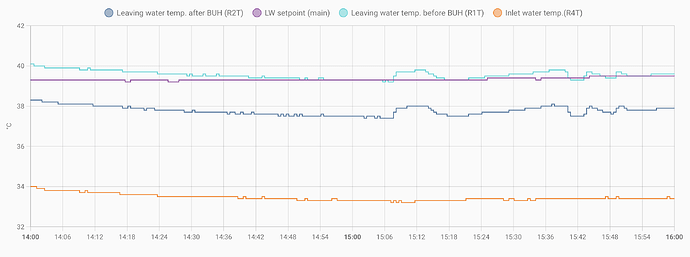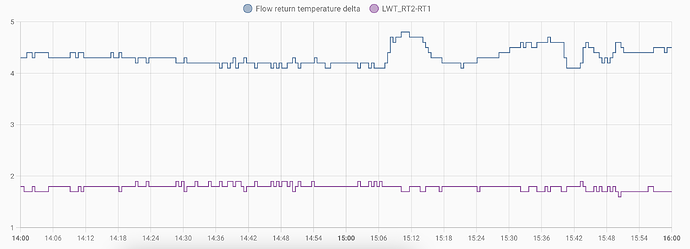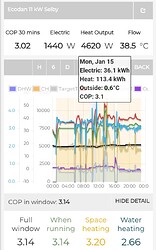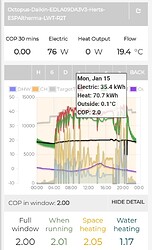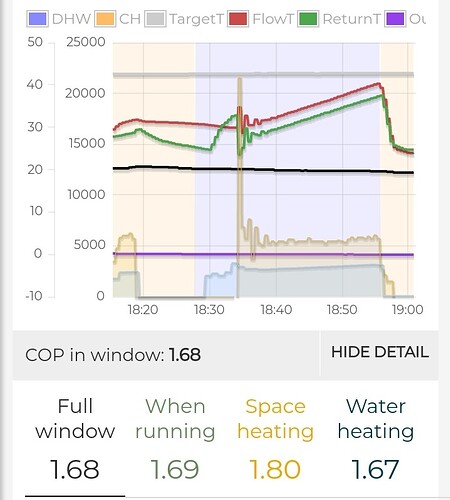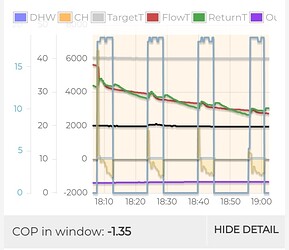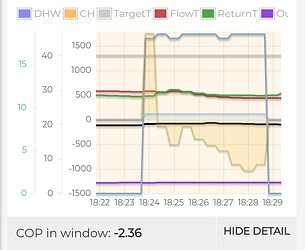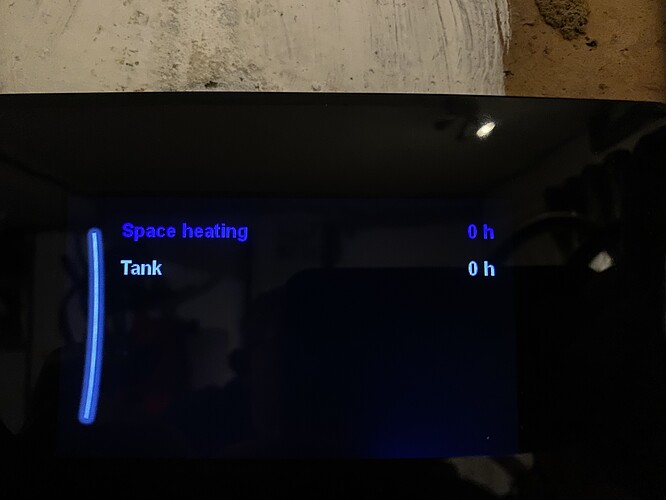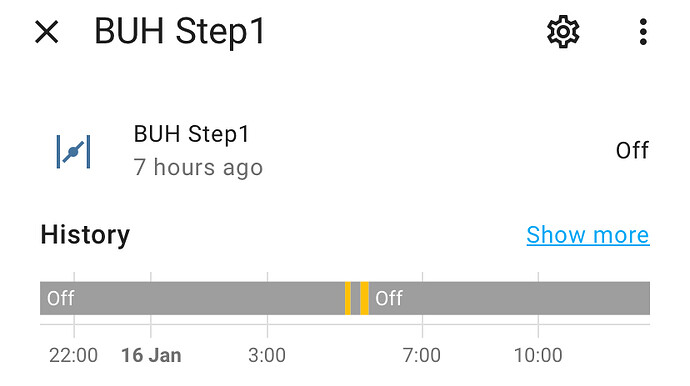This is an excerpt from your data today.
You have about 15,500w of radiators at a dT of 50c
At a dT of 20c your maximum heat output should be about 4,600w, it is spot on.
I got a COP of 2 point something with radiators bigger than yours measured with a heat meter.
It is about what I would expect. My house was warm too, it was just the COP was poor.
But I am not telling you what to do, it’s your house and you are there and know best.
Adjust as you see fit based on your measurements, I don’t think anybody can really guide you.
I can only tell you that my MID monitored heat pump that is the same as yours agrees with the data from the heat pump.
R1T is completely irrelevant, it is not the temperature of the water coming out of the heat pump, R2T is.
I discussed this with a Daikin engineer on Friday and they laughed when I told them. R2T is what comes out of this heat pump, they confirmed it. R1T is a temperature inside the heat pump before the water has travelled through all of the other equipment and leaves the heat pump. The leaving water temperature is all that matters and it is what the heat pump is using to set the dT between flow and return. We can see 5c on your data, it must be working and it is what you have asked for?
The data from the MMI matches more or less my heat and electricity meters and I have no reason to doubt it.
I think your data is right and that really is how your heat pump is performing, it all makes sense based on your radiators sizes.
What do you think your COP really is today?
Mine is 3.21 so far
If you want advice on what to adjust and by how much I am sure some of the others will be able to tell you what they have done and how they arrived at it.
But from somebody with a heat meter, I can tell you that my R2T and R4T agree with the heat meter as does my flow rate and that my R1T is 1c to 2c higher than R2T
I can’t and don’t adjust or calibrate my data to match R1T because that is not what is leaving the heat pump.
I haven’t fitted ESPAltherma partly because I have no idea how to set it up and I am hoping to get rid of this heat pump imminently and don’t want to do anything to harm that.
But honestly, if it confirmed what I said, I am sure you would still think yours wasn’t right.
I don’t blame you.
I was just trying to help you see where your problem really is, it truly is the radiators, they’re not just on the small size, they are way under what you need to get what you want out of this heat pump.
No offence intended, I think it is better to be honest than just agree when I don’t.

